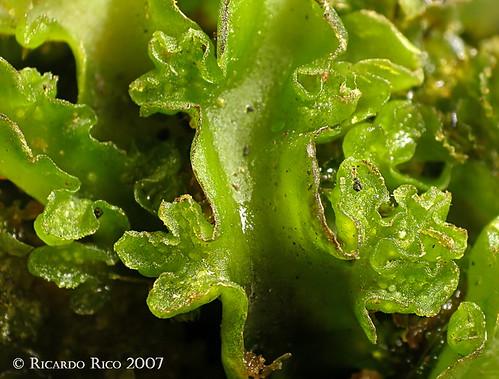
8792216542_4e1cce777c_b.jpg from: https://www.flickr.com/photos/95549735@N08/8792216542/
Exploring the Fascinating World of Aneura pinguis var. angustior Moss

16893657399_1fb966ddda_b.jpg from: https://www.flickr.com/photos/paulsiriwilson/16893657399
Introduction
Today we’re diving into the captivating realm of bryophytes to spotlight a particularly intriguing species – Aneura pinguis var. angustior (Hook.) R.M.Schust., a type of thallose liverwort moss in the

1971269634_566694e457.jpg from: https://www.flickr.com/photos/r-rico/1971269634
Aneuraceae family, commonly known as Aneura. This diminutive yet important plant plays key ecological roles and boasts some remarkable adaptations. Let’s take a closer look!
Background on Aneura Moss
Aneura pinguis var. angustior is classified under the plant division Marchantiophyta

ob_801a41_aneura-2.jpg from: https://naturealsacebossue.over-blog.com/2019/08/aneura-pinguis-et-les-echanges-gazeux-chezles-mousses.html

7148930049_caa4681b8c_b.jpg from: https://www.flickr.com/photos/12639178@N07/7148930049/
and class Jungermanniopsida

obsfoto_f2982c1e-6641-4bb3-b403-4a53f22a1c64.jpg from: https://www.naturbasen.dk/art/8618/tyk-nerveloes
. The Aneuraceae family contains around 400 species worldwide. Aneura mosses lack leaves, instead having flattened, fleshy bodies called thalli.
Morphology and Identification
A. pinguis var. angustior has narrow, elongated thalli that are dark green and translucent. The thalli have smooth, wavy margins and a distinct midrib. Male and female reproductive structures develop on separate thalli. Under magnification, you can spot the numerous oil bodies in the thallus cells, a key identification feature.
Global Distribution and Habitat
This moss has a wide global distribution, found in Europe, Asia, Africa, Australia, and the Americas. It grows in moist, shaded microhabitats like stream banks, damp soil, rotting logs, and rock crevices in forests. The ability to tolerate low light allows it to inhabit dim understory environments.
Ecological Roles and Adaptations
As a bryophyte, Aneura moss plays vital roles in its ecosystems:
- Nutrient cycling: Helps capture and cycle nutrients, enriching the soil
- Moisture retention: Dense mats help retain moisture in the environment

Blasia-pusilla-1015-800×600.jpg from: https://www.britishbryologicalsociety.org.uk/learning/species-finder/aneura-pinguis/
- Microhabitat creation: Provides shelter and habitat for microorganisms and invertebrates
- Pioneer species: Often among the first plants to colonize disturbed areas

52557864078_5185c00e49.jpg from: https://www.flickr.com/photos/bogyawn/52557864078
A. pinguis var. angustior has several adaptations for its moist, shady habitats:
- Poikilohydry: Can tolerate drying out and rehydrate when water is available again
- Rhizoids: Root-like structures anchor it to substrates and absorb water and nutrients
- Asexual reproduction: Can reproduce via fragmentation, allowing quick local spread
Conclusion

5ce3c2de56352254442626.png from: https://www.czasopismobiologia.pl/artykul/10-gatunkow-w-jednym-badania-molekularne-ujawniaja-nowe-gatunki-ukryte-wewnatrz-starych-badania-nad-aneura-pinguis
Aneura pinguis var. angustior may be small, but it plays an outsized role in the ecosystems it inhabits. From cycling nutrients to creating microhabitats, this marvelous moss is a key player in the fascinating world of bryophytes. Next time you’re out in nature, take a moment to appreciate the miniature forests beneath your feet! What other tiny wonders have you discovered on your adventures?
1665249932 from: https://www.scribd.com/doc/220415726/Aneura-pinguis